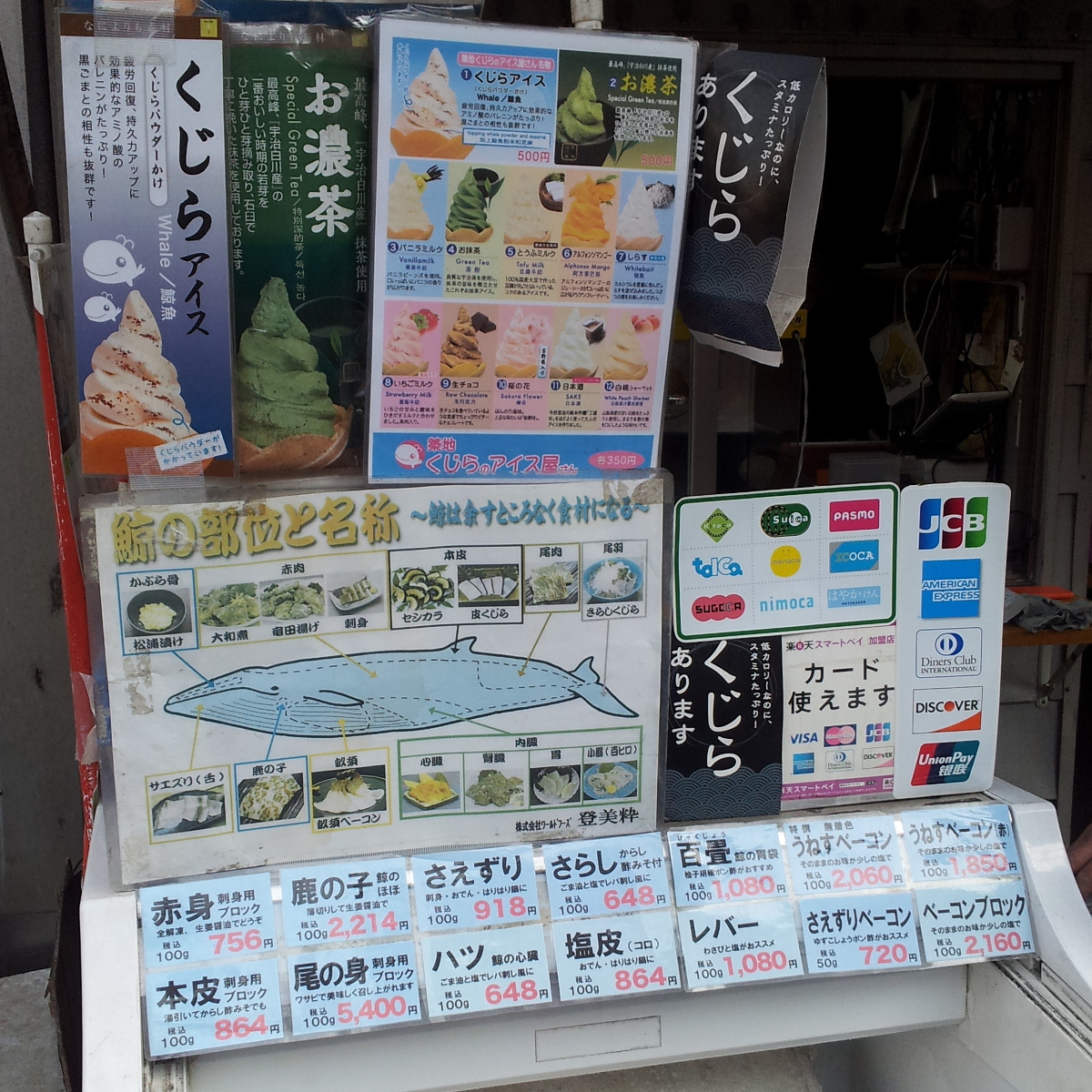Ginza and Tsujiki
※ This article discusses our fourth day in Tokyo, the 20th of March 2017.
Ginza is a district famous for its luxurious shops. Jewelry, hand bags and shoes are the most displayed goods in show windows.
We visited other Japanese friends this day and we met close to the main station. It was 14:00, because this is the time, when the street is close and pedestrians can roam the streets. This is a governmental initiative to encourage shopping in this district. We used the morning to sleep long, tidy up a few things and prepare for the day. Before we met, we also ate for lunch. A family restaurant offered Japanese-Chinese dishes. Afterwards we began to traverse the district.
The district is full of luxurious shops. Actually, we did not want go inside. In every shop there were plenty of employees and very few customers as can often be seen at expensive locations. Sometimes you can observe art in the show windows, which can also look nice.
We finally arrived at Kabukiza. It is an important theatre of Japan to represent Kabuki, the classical Japan dance-drama. To give you an idea of Kabuki, you can watch one example Kabuki on youtube. I asked our Japanese friends whether they have watched one Kabuki in their life? They answered once. They explained it is difficult to follow the plot and the language. They don’t like it very much.
Our next goal was the Tsukiji Hongan-ji Temple, a Jodo Shinshu Buddhist temple in Tsujiki. Tsujiki is adjacent to Ginza. This temple was remarkable, because the representative inside the temple was very chatty. He asked where we come from and what we do in Japan. I took some photos from the inside, but the outside was more interesting. The front of the temple is very beautiful though the right side was under construction.
Tsukiji is most famous for its fish market. I associate Tsujiki fish market with an article of the Austrian national broadcast: "Japan: Thunfisch für 609.000 Euro ersteigert" (translated "Japan: Tuna auctioned for 609,000 EUR"). This particular Tuna was bought in an auction at Tsujiki fish market. The Austrian broadcast correctly points out that Japan is criticized for its fishing policies. The "Atlantic bluefin tuna" is one threatened fish species, but Japan keeps hunting them, because fish and sea food is so popular in Japan. Demand creates offer in capitalism.
As Wikipedia points out, Tsukiji fish market is "the biggest wholesale fish and seafood market in the world and also one of the largest wholesale food markets of any kind". As a tourist, you can only access the outer retail market. The inner wholesale market with its auction is restricted to fishermen and vendors. Remember that the market is the busiest in the morning and we visited it in the afternoon. Basically we saw a lot of fish and seafood. The crabs were extraordinarily large and are kind of scary when they are still alive. We went along the streets with the booths of retailers, when we came across the following booth:

They sell whale ice cream. This got my attention, because of the political situation concerning whaling in Japan. The current situation is that Iceland, Norway and Japan refuse to ban whaling. Often the following rationale is provided: Whaling is integral to their own culture and therefore banning whaling means losing cultural identity. In recent years, whaling is justified with scientific purposes and hunting is implemented with scientific programmes. Its implementation and purpose is under heavy criticism by organizations such as Sea Shepherd, which got a lot of publicity, because the organization was covered in the series "Whale Wars" airing in 2008. In 2014, it was proven that Japan hunts for commercial, and not scientific, purposes.
I wanted to investigate the question, whether there is any whale species Japan can hunt legally. But our Japanese friends continued walking. To this day, I think there is no such whale species and what I saw is breaking laws according to the International Court of Justice (UN’s judicial branch).
We went into Tully’s Coffee to consume a snack. There we chatted a lot. One of the most interesting fun facts, I learned, is that Japanese girls often go to dye their hair after high school graduation. Why? Because they are not allowed to do so before. School uniforms are a big deal in Japan and besides the uniforms also the hair style is defined. Girls are not allowed to dye their hair.
After we went to the beach briefly, we met with another Japanese person at an Okinawian restaurant in Asakusa. I need to admit that I liked the restaurant a lot. The fruits and dishes were quite different and interesting to try out. Also the final caramel peanuts were amazingly good.
We said goodbye and left Asakusa to go home. Conclusion? We had initial problems to chat with our Japanese friends, but the whale ice cream made the day interesting accompanied with a bad, political taste. I think Ginza was quite boring, but Tsukiji was okay.